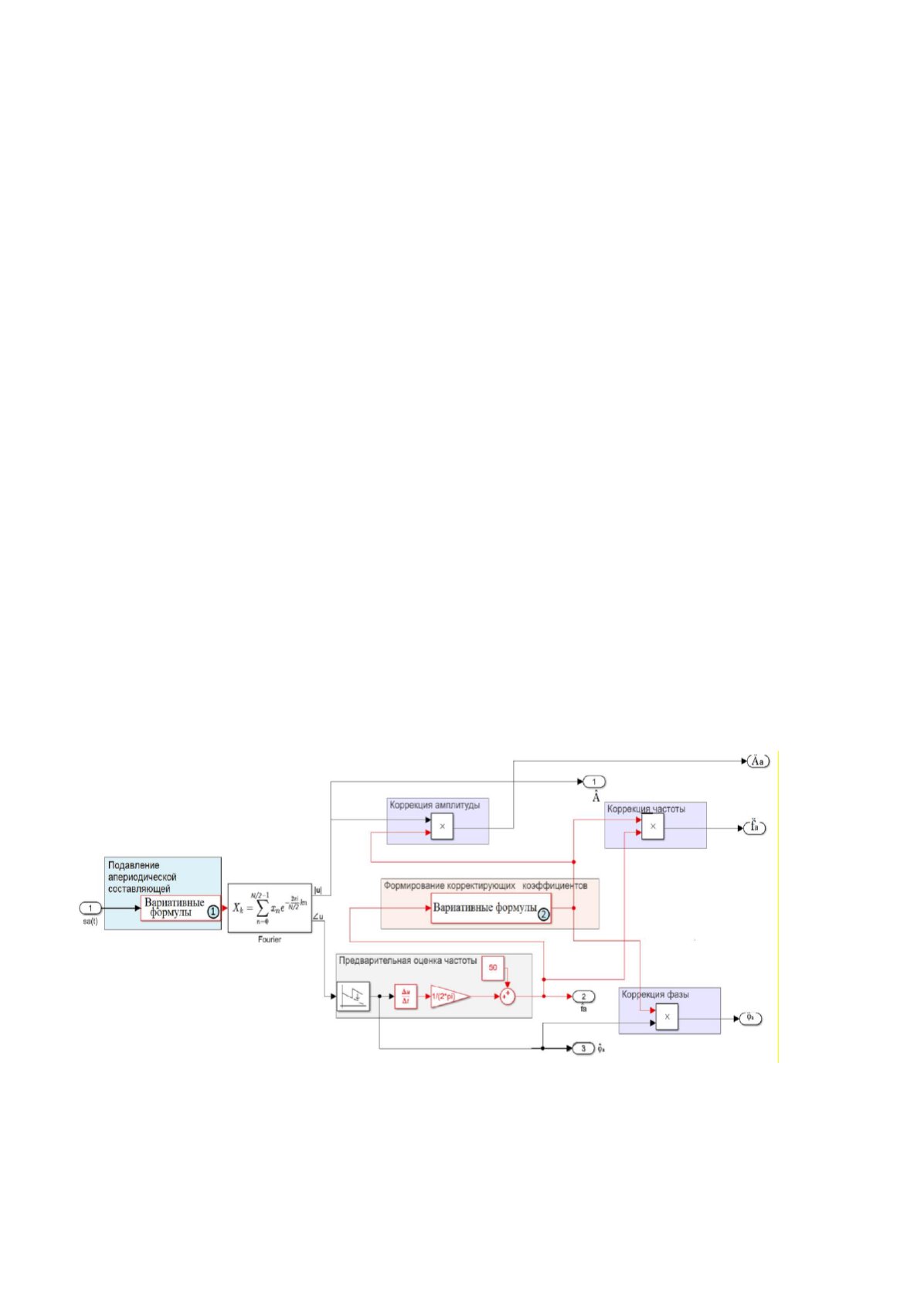
234
Materials and methods:
Using the classical discrete Fourier transform (DFT) with a window length of one period of the
industrial frequency and the modernized DFT with a window length of half a period developed on the basis of it and classical
methods of fast Fourier transform to obtain the spectral density of the signal under consideration.
Results:
The possible ways of applying various variations of the DFT algorithm for estimation the parameters of an
industrial frequency signal in the presence of harmonic, interharmonic and subharmonic components are determined. Data
on harmonic and subharmonic vibrations are obtained. The analysis of the latter was carried out by preliminary obtaining the
spectral density of the original signal. Also, for all components, the accuracy of estimates of the obtained parameters is given,
which is necessary for the correct choice of the subsequent algorithm for analyzing the observed data.
Conclusions:
This paper presents various methods for the analysis of harmonic and interharmonic components in the
initial signal of the industrial frequency. Since such interference complicates the work of existing algorithms, it is necessary
to be able to isolate them and subject them to timely analysis. This suggests the need to expand the functionality of the PMU
(Power Measurment Unit). A number of additional options for analyzing incoming data will allow you to respond faster to
constant dynamic changes in the power system. This is especially important for wind energy, because, as mentioned earlier,
the wind farm is prone to unstable operation due to factors that are not directly controlled (weather conditions, wind speed,
wind strength, etc.).
Key words:
discrete Fourie transform, harmonics, interharmonics and subharmonics, spectral density, PMU.
I.
В
ВЕДЕНИЕ
На сегодня многие методы, посредством которых
обрабатываются данные в УСВИ, позволяют
получить информацию только о первой гармонике,
которой явно будет недостаточно для анализа
сигналов,
содержащих
субсинхронные
составляющие, поэтому в докладе предлагается метод
для
определения
параметров
субсинхронных
колебаний на примере низкочастотных колебаний,
наблюдаемых в ВЭС. Зная статистику распределения
частот и параметры субсинхронных колебаний,
можно будет с большей точностью отслеживать
динамические процессы в ЭС, тем самым
минимизируя ущерб от возможных аварий или
вообще исключая появление таковых. может
приводить
к
колебательному
нарушению
устойчивости.
Вследствие того, что в ближайшие годы динамика
развития ВЭС будет лишь наращивать обороты,
увеличивая долю ветровой генерации, динамическое
поведение энергосистемы будет соответственно
меняться, это внесет дополнительные трудности и
сложности по идентификации субсинхронных
колебаний. Поэтому в статье приведены практические
результаты мониторинга субсинхронных колебаний и
предложены технические решения по мониторингу
субсинхронных колебаний ВЭС.
II.
Т
РЕБОВАНИЯ К РАБОТЕ АЛГОРИТМОВ НА ФОНЕ
ГАРМОНИК И ИНТЕРГАРМОНИК
Рассмотрим требования при сертификационных
испытаниях УСВИ при оценке параметров векторов
промышленной частоты, которые наблюдаются в
условиях гармонических и интергармонических
искажений.
Рис. 1 – Структурная схема предлагаемого модифицированного полупериодного алгоритма ДПФ


